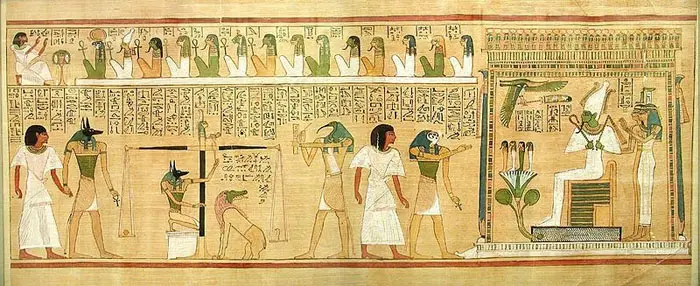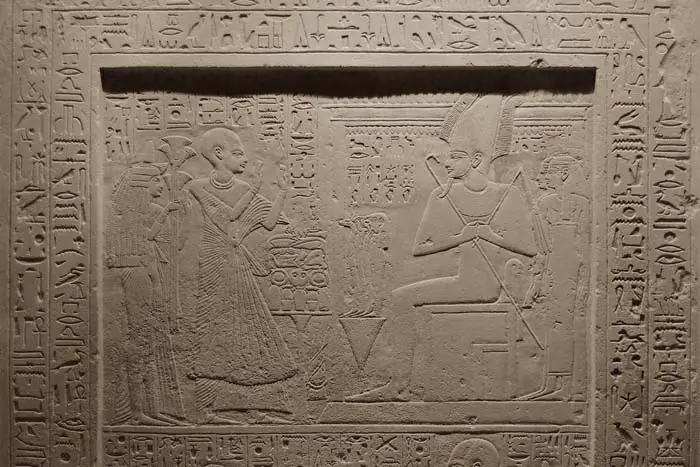Fertility, Resurrection, and Everlasting Life
It is said the dead kings of Egypt would rise with Osiris and inherit eternal life. By Egypt’s New Kingdom it was said not only would the dead kings rise from the dead with him, but any Egyptian that performed the appropriate rituals would also. This belief that Osiris is responsible for new life after death caused him to be associated with the New Year and the cycles of nature.
His worship continued to be popular until the rise of Christianity. At that time the Romans began to suppress the Egyptian religion and actively promote Christianity. Even in the face of active Roman suppression of the Egyptian religion, many people, Egyptians and others, continued to revere, sacrifice to, and worship him secretly for hundreds of years.
The Significance of the Resurrection
To the ancient Egyptians, Osiris’ resurrection after being slain by his evil brother Set represents the new beginning for good after it has defeated evil. To them, the tale was symbolized by the sun going into the world of the dead each night and being reborn with each new day.
As such, he came to be identified as the Creator god who is king of the underworld and the afterlife and who controls life, death, rebirth, and resurrection. A pillar of continuity, representing the phallus created by Isis, became a symbol of the Ba or power of Osiris and was used in his worship.
A Familiar Story
It’s not surprising if the story of Osiris sounds familiar. Many of the elements of his story are similar to the death and resurrection of Jesus. Where their stories are very different is what is said to happen to people after they die.
Ancient Egyptians believed the deities Anubis, Ammut, Henefer, Ma’at, Osiris and Thoth would greet the person in the afterlife and perform the weighing of the heart ceremony. The person’s heart was weighed against the feather of Ma’at. If it was lighter than the feather they had lived a good, truthful life and would spend eternity in the kingdom of Osiris.
 ©GoShows – Osiris (right, seated) at the Weighing of the Heart Ceremony
©GoShows – Osiris (right, seated) at the Weighing of the Heart Ceremony
Worship
In ancient Egypt, worship of Osiris was an important part of their everyday life. The story of his death at the hands of Seth and his 72 accomplices was retold each year as part of their worship. It was a story of regeneration and rebirth they saw play out each year with the cycle of the flooding of the Nile.
Egypt was a very fertile place, one of the breadbaskets of the Old World. The ancient Egyptians attributed much of this to Osiris and they held many ceremonies to give praise to his name, actions, and attributes.
Seen as the first king of Egypt, his symbols, the flail and the shepherd’s staff, became important symbols of the pharaohs that came after him. His reign was viewed as the ideal which succeeding Egyptian rulers attempted to emulate. To his followers, he represented a time of peace, unity, and fertility.
Osiris was the good shepherd who was loved by his people and it was felt that paying homage and venerating him would help Egypt and Egyptians to be successful. It was believed worshiping him would forever ensure fertility, prosperity and plentiful crops on the banks of the Nile.
 © Jan – Royal butler Paatenemheb and his wife Tipuy worshiping Osiris
© Jan – Royal butler Paatenemheb and his wife Tipuy worshiping Osiris
Celebrations
The celebrations dedicated to Osiris, including the Great Mystery Festival and a 5 day religious ritual, were held each spring. They included plays, story telling, religious services, feasting, and fun. Some of the celebrations commemorated his life by planting grain moistened with water from the Nile in gardens in the shape of Osiris. The grain’s subsequent germination and growth symbolized his death and resurrection.
Egyptians believed the sprouting grain symbolized his unwavering vitality and strength. The people praised Osiris as ‘The one who came from heaven and was the bread which sustained the lives of mankind’. He was called ‘The one who continues to be perfect’. These celebrations were held in the last month of the inundation of the Nile.







































